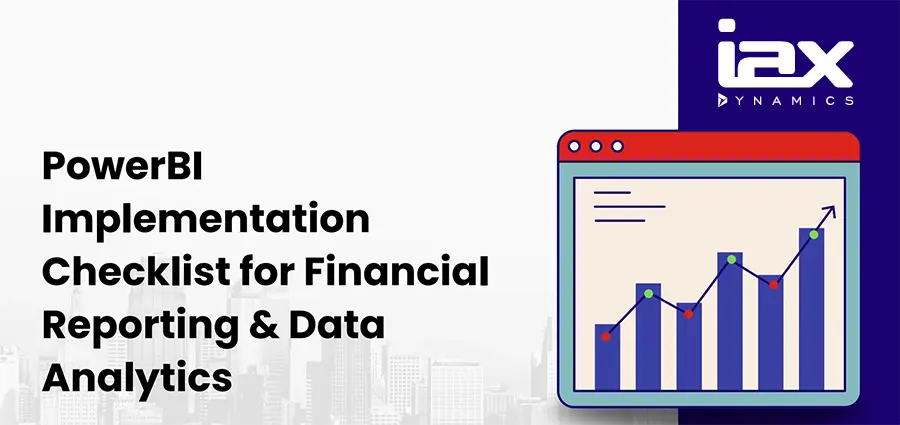Business growth is driven by multiple factors. Financial reporting and forecasting are among the decisive parts that drive overall business outcomes. BI and analytics software bring about the transformation through the analysis of business data.
Manual analysis of financial data cannot provide the precision needed to stay ahead in financial performance. As technology evolves and many analytics tools become available, analysis has become easier and more accurate.
BI for finance and financial analytics tools guide organizations toward stable financial growth. These tools transform raw data into actionable insights for better reporting, forecasting, and strategic planning.
What is BI and analytics software?
BI and analytics software is a suite of services that collect, process, analyze, and visualize data. This software helps organizations identify trends and make meaningful decisions across operations.
Business Intelligence
BI tools collect information from accounting software, databases, ERP, or CRM systems and turn it into valuable insights. These insights are viewed through interactive dashboards and reports. Decision-makers can identify trends, patterns, and KPIs from the dashboards and reports.
Analytics
Analytics tools use AI, algorithms, and statistical models to predict future outcomes. BI provides descriptive insights for day-to-day operations and analytics offers a picture of what will happen next.
Together, BI and analytics software give a complete view of business performance.
The software is invaluable in finance. BI tools give an overview of current revenue, expenses, and profitability and analytics tools can predict future cash flow and identify risk factors. This facilitates data-driven forecasting and improves decision-making.
Together BI and analytics software gives a total view of business performance. In finance, BI tools give an overview of current revenue, expenses, profitability and analytics tools can predict future cash flow and identify risk factors. This facilitates data-driven forecasting and improved decision-making.
BI and analytics process covers various stages
1. Data Collection and Integration
Financial data from various sources are brought together and stored in a centralized platform. The process combines data from CRM and ERP systems, accounting packages, external market data, and more.
2. Data Preparation
Data is cleaned, transformed, and validated to make certain accuracy. This secures data quality with no errors or duplicate entries.
3. Data Analysis
Prepared data undergoes analysis to derive insights. Analytics falls into different categories which include descriptive analytics, predictive analytics, and prescriptive analytics.
4. Data Visualization and Reporting
Once the data is analyzed, the insights can be viewed through dashboards and reports. Dashboards provide graphical representations of financial metrics. Detailed reports such as charts and graphs give a clear picture of financial performance and give other relevant insights to decision-makers.
BI for financial reporting helps maintain a healthy financial performance. It goes beyond static reports by providing real-time updates and interactive visualizations that are easier to interpret than traditional spreadsheets.
What is the importance of BI and analytics in Finance?
Business intelligence and analytics are crucial for the finance industry. They unify data and transform large amounts of financial data from multiple systems into actionable insights.
Analysis based on current and historical financial data provides a clear picture of what is happening and what is likely to happen. This approach is reliable than depending on guesswork, gut feelings, or static reports.
Data analytics for businesses makes it easy for finance professionals to analyze revenue growth, cash flow, profitability, and cost trends. And access to financial analytics tools transforms the way organizations carry out financial planning.
Important Financial applications of BI and analytics
BI identifies potential threats by analyzing transaction patterns and market trends. This helps prevent financial fraud.
Predictive analytics capability helps create accurate forecasts for budgets, sales, and future planning.
Dashboards and reports provide insights into expenses, revenue growth, and profitability.
Analytics identifies patterns in spending and factors affecting operational efficiency to highlight areas for cost reduction and improved profitability.
Finance teams can analyze customer data to identify spending patterns, forecast customer behavior, and support personalized offerings.
Business Analytics Trends 2025
Trust in business analytics is higher than ever among organizations. This applies not only to finance, but also to other business functions. The growth of technological innovation is giving a new face to analytics. Now it is enriched with AI, automation, and advanced analytical capabilities.
Here are some business analytics trends 2025 that organizations should pay attention to.
- Machine learning improves forecasting accuracy and detect discrepancies in financial data.
- Self-service BI let finance teams to create their own dashboards and reports without IT dependency.
- Cloud analytics service let users analyze data from anywhere and on any device.
- Natural language query let users chat in their plain language to extract insights from data.
These innovations accelerate the analysis process and help organizations to maintain a healthy financial performance.
Data Security in BI tools
Data security secure business data and helps meet compliance. The software cover role-based access control, data encryption, multi factor authentication, audit logs, and more.
Are you ready to improve financial growth with strategic planning and accuracy?
IAX DYNAMICS implements modern BI and analytics software that aligns with your specific financial goals.
Our consultants use our expertise to drive value through the implementation of Microsoft Power BI. We move ahead with a clear understanding of your goals to deliver the perfect analytics solution with the right Power BI license.
The solution is exceptional in data-driven forecasting to reduce financial risks. In addition, the inclusion of business analytics trends reshape how you manage finance and achieve consistent growth.
To take a leap in business growth through BI and analytics software implementation, connect with our professionals.
FAQ Section
Why you should choose analytics solution?
The analytics software handles data to derive meaningful insights. This allows you to gain a deep understanding of financial performance and other processes.
What are latest trends in BI software?
They are AI insights, self service analytics, natural language processing, advanced data security, and cloud analytics.
Which BI software you can choose?
Microsoft Power BI is widely used by organizations worldwide. It connects multiple data sources, let users create interactive dashboards, and gain real-time insights into financial performance.




